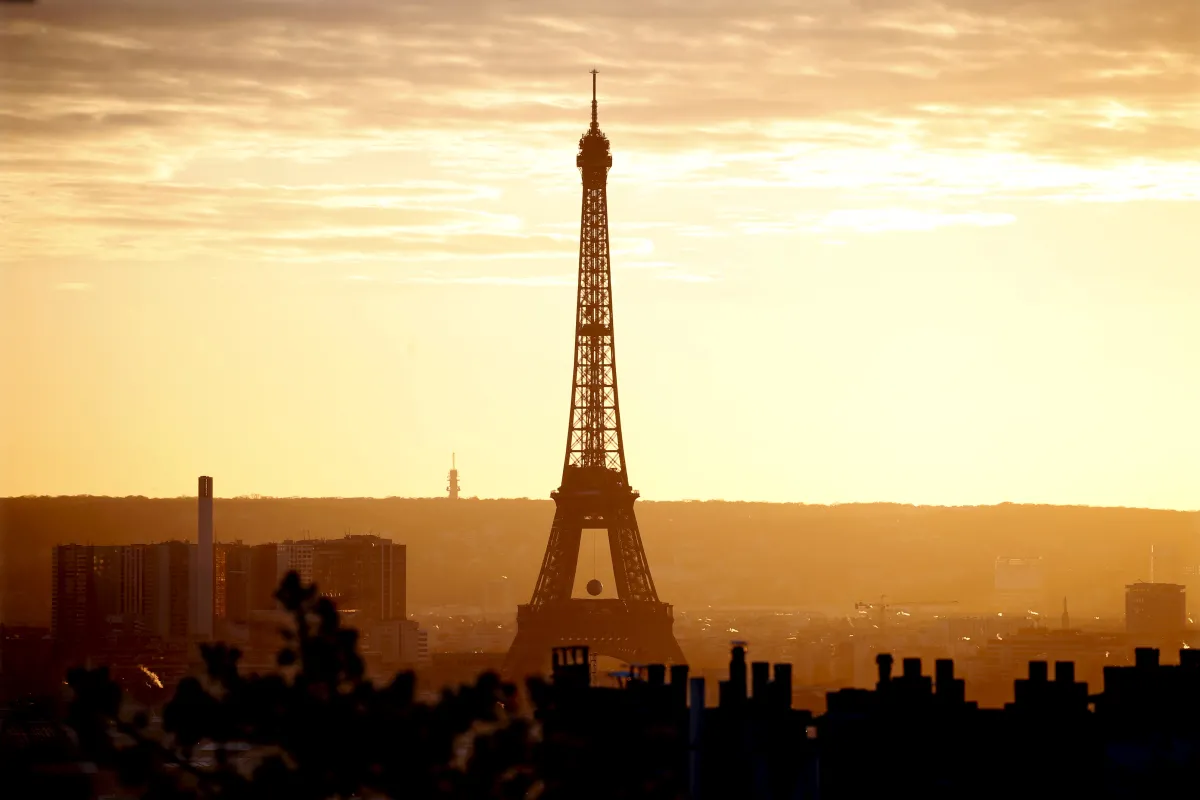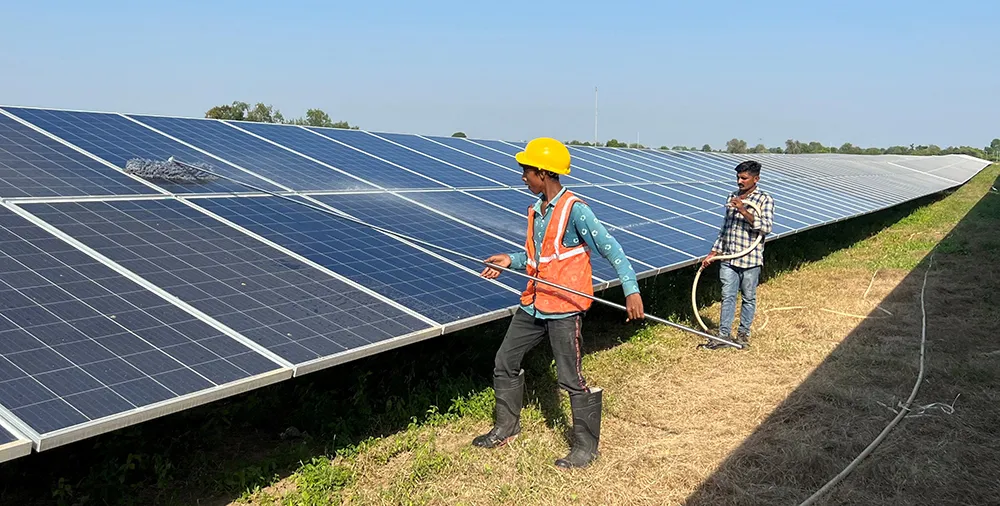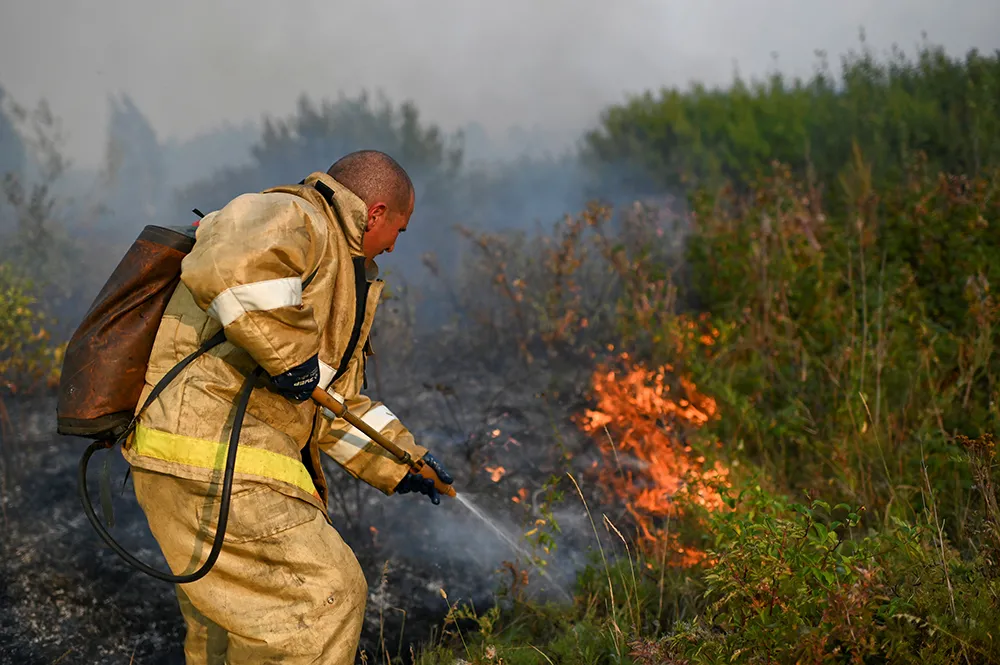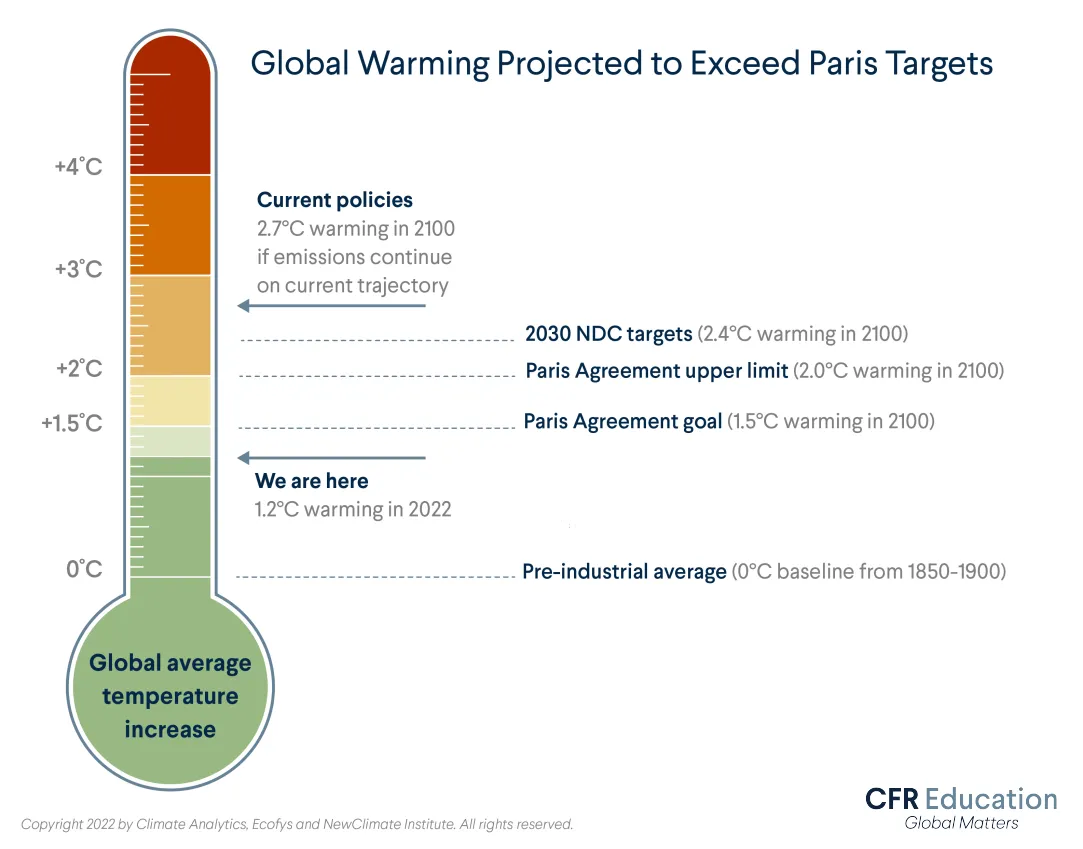The Paris Agreement
What is the Paris Agreement? In this free resource, learn what actions countries are taking to address the global threat of climate change.
What is the Paris Agreement?
On December 12, 2015, in Paris, 195 governments agreed to the text of the most significant global climate agreement in history. Known as the Paris Agreement, the international deal commits nearly every country in the world to lowering greenhouse gas emissions. This treaty is designed to curb the dangerous effects of climate change.
The Paris Agreement, which entered into force on November 4, 2016, aims to prevent global temperatures from rising above pre–Industrial Revolution temperatures by 2˚C (3.6˚F). Ideally, the Paris Agreement strives to limit global temperature increases to 1.5˚C (2.7˚F).
Why does the Paris Agreement want to limit global temperature increase to 1.5 degrees Celsius?
Countries aim to keep global temperature rise below 1.5˚C (2.7˚F) because scientists caution that the effects of temperatures rising any higher would be catastrophic and potentially irreversible. Scientists focus on the Industrial Revolution because it marks the time when human activities began releasing greenhouse gases into the atmosphere in massive quantities. Since then, global temperatures have risen by more than 1˚C (1.8˚F). Scientists predict that this may increase to between 2°C and 4°C in the next century. Global temperatures have fluctuated throughout the earth’s history, but the current pace of change is unprecedented. NASA has estimated that the rate of global warming over the next century will be twenty times faster than historic averages. The rate of global temperature increase is cause for serious concern.
Why is the Paris Agreement important?
Under the Paris Agreement, all countries share responsibility.
Past climate agreements—most notably the Kyoto Protocol, the most significant climate accord before the Paris Agreement—mandated that countries reduce their emissions by particular standards. It placed the responsibility of climate change—and the obligation to fix it—on developed countries, which historically have emitted the most greenhouse gases. For example, the legally binding Kyoto Protocol initially required the European Union to cut greenhouse gas emissions by 8 percent while not asking for any reduction from dozens of less-developed countries.
But the Paris Agreement revolutionized climate politics by changing the model of negotiations. Now, all countries voluntarily set their goals based on their economic abilities. To achieve this, countries put forward individual plans known as nationally determined contributions (NDCs). NDCs are a platform for each country to establish proposed emissions reductions and adaptation strategies.
Unlike previous climate agreements, the Paris Agreement is entirely voluntary. While the agreement requires every country to submit an NDC plan, there are no stipulations as to what ways and by how much countries should cut emissions. Countries’ plans can differ significantly, varying with regard to their specific goals, levels of ambition, and even how they measure emissions cuts.
The Paris Agreement’s central aim is to strengthen the global response to the threat of climate change by keeping a global temperature rise this century well below 2 degrees Celsius above pre-industrial levels.
Commitment to Paris Agreement goals varies
India’s NDC revolves around a reduction in total greenhouse gas emissions, the creation of additional forests, and a shift toward renewable energy sources. By 2030, India plans for 50 percent of its power generation to come from renewable energy sources such as solar. As the third-largest national emitter of greenhouse gases, India has already taken steps in this direction: investments in renewables surpassed fossil fuel investments in 2017.
There are challenges, however: most notably a continued reliance on coal-fired power plants. As well, India’s rapidly growing population and increasing energy demands threaten their climate progress.
Russia is doing less on climate action. It took Russia four years to secure domestic political approval—also known as ratification—for the Paris Agreement. Meanwhile Russia’s leader has flip-flopped on climate change in recent years. In 2015, Russian President Vladimir Putin cautioned that “the quality of life of all people on the planet depends on solving the climate problem.” Just two years later, however, the Russian president adopted a different position, denying the significant role humans have played in contributing to climate change. No real progress has been made toward responsible climate policy in Russia. The pledges Russia has made are either vague or weak. Ultimately, the Kremlin is unlikely to meaningfully reduce Russia’s emissions.
Rather than reducing emissions and focusing on the root cause of climate change, Russia appears to be responding to climate-related disasters as they arise. However, this strategy of adaptation could prove prohibitively expensive in the long run. As the world becomes warmer, the frequency of climate disasters has increased. If all countries followed Russia’s example, rises in global temperature could far exceed 2˚C.
Did the United States withdraw from the Paris Agreement?
The United States announced its decision to withdraw from the Paris Agreement in June 2017 despite originally helping to lead negotiations to draft the agreement. President Donald Trump, who promised to boost the heavily greenhouse gas–emitting coal industry, claimed that the Paris Agreement would cost the United States jobs. His decision to withdraw the United States, which went into effect in 2020, left the United States as one of only four countries in the world outside the Paris Agreement.
The significance of the U.S. decision to leave the Paris Agreement should not be understated, especially given that the United States is the world’s second-largest greenhouse gas emitter. The country’s promised emissions cuts accounted for approximately 20 percent of total global cuts projected under the Paris Agreement. However, even with the United States’ 2015 pledge, the country did not appear to be on track to limit global warming to well below 2˚C. At the current rate, the United States could be contributing to a drastically warmer planet.
Upon taking office in 2021, President Joe Biden reentered the United States into the Paris Agreement. His administration’s climate plan sets the goal of guiding the United States toward net-zero emissions by 2050. Toward this goal, Biden signed the Inflation Reduction Act into law. The far-reaching bill made significant changes to U.S. tax policy and healthcare costs. Most importantly, however, the bill represented the United States’ largest-ever investment in addressing climate change, promising to allocate around $370 billion to climate initiatives over the course of ten years.
Upon returning to office in January 2025, President Trump withdrew the United States from the Paris Agreement for a second time and signaled his intent to either roll back the IRA entirely or significantly limit its implementation. The significance of these decisions should not be understated, especially given that the United States is the world’s second-largest greenhouse gas emitter. The country’s promised emissions cuts accounted for approximately 20 percent of total global cuts projected under the Paris Agreement. Even with the United States’ 2015 pledge, the country did not appear to be on track to limit global warming to well below 2˚C. At the current rate, however, the United States could be contributing to a drastically warmer planet.
Is The World on Track?
The Paris Agreement has prompted many countries to make considerable investments in fighting climate change. Several countries are making significant progress: Chile has dramatically improved its renewable energy production and is phasing out coal use faster than expected; Nepal has generated all of its electricity from renewable energy sources since 2015; and Norway is on pace to replace combustion vehicles with electric options well ahead of its planned target.
Still, despite this progress, the world is not on track to meet the Paris Agreement’s goals.
In 2023, the parties to the Paris Agreement participated in the first Global Stocktake (GST), a review of countries’ progress toward meeting the goals of the agreement. It found that Global emissions are still rising, and countries’ current NDCs are not enough to meet the agreement’s goals. Many NDCs remain vague, unclear, and short, missing important details on how the country plans to actually tackle climate change. As it currently stands, the voluntary pledges made by governments would still result in global warming likely reaching 2.6˚C by the year 2100, well above the 2˚C goal, let alone the more ambitious 1.5°C target.
To achieve the Paris Agreement's targets, the GST concluded that countries would need to cut global greenhouse gas emissions by around 43 percent compared to 2019 levels by 2030 and 60 percent by 2035. To keep a 1.5°C target within reach, countries will need to reach net-zero emissions by 2050.
Meeting these targets will require steep emissions cuts, well beyond what countries have currently committed.
The future of the Paris Agreement
Fortunately, the Paris Agreement does have provisions for a “ratchet mechanism,” designed so that NDCs grow more aggressive over time. Every government that agreed to the Paris Agreement is required to either update or submit a new NDC, at minimum, every five years. Each subsequent NDC must be more ambitious than the last. In other words, the updated plans must ratchet up the stringency of emissions targets and other actions.
While the Paris Agreement is not perfect, it represents a significant global advance in addressing an issue that greatly affects the entire world. Even though countries will need to take significant additional steps to meet its ambitious targets, the Paris Agreement has spurred considerable climate action already, and provides an essential framework for countries to push for further action. The Paris Agreement is a historic first step, but to solve climate change, it cannot be the last.
Fortunately, the Paris Agreement does have provisions for a “ratchet mechanism,” designed so that NDCs grow more aggressive over time. Every government that agreed to the Paris Agreement is required to either update or submit a new NDC, at minimum, every five years. Each subsequent NDC must be more ambitious than the last. In other words, the updated plans must ratchet up the stringency of emissions targets and other actions.
While the Paris Agreement is not perfect, it is significant because it is the first major climate agreement of its kind. The Paris Agreement represents a global step toward resolving an issue that greatly affects the entire world. The Paris Agreement is a historic first step, but it cannot be the last.






